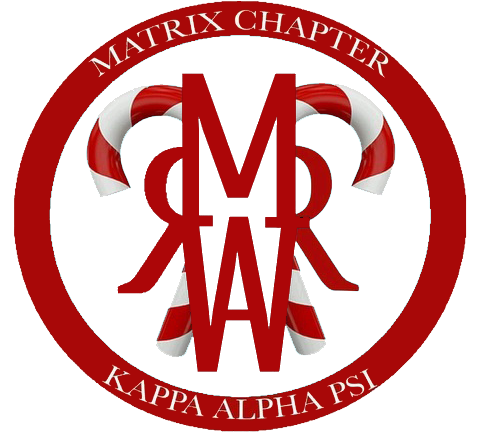
Founder Elder Watson Diggs embodied the essence of quiet strength, scholarly dedication, and boundless vision. His pen flowed with wisdom, his demeanor polished, marking him not only as ‘the Father of Kappa’ but also as ‘the Dreamer’—a title earned through his unwavering commitment to manifesting a fraternity that would stand the test of time.
Born in the heart of Christian County, Kentucky, on December 23, 1883, Diggs emerged as a guiding light from humble beginnings. Amidst the simplicity of a one-room school in Louisville, he nurtured a passion for learning, extending his hand to educate those around him. His journey led him to the hallowed halls of Indiana State Normal School, where he laid the foundation for his future endeavors.
With the dawn of 1909 came a pivotal chapter as Diggs embarked on his odyssey at Howard University. It was here that destiny intertwined with friendship, weaving a bond with Byron K. Armstrong that would shape history. In the corridors of academia, amidst the ebb and flow of knowledge, Diggs found not only enlightenment but also the spark of inspiration that ignited his visionary spirit.
In the tapestry of his life, Elder Watson Diggs painted a portrait of resilience, determination, and unwavering belief. His story resonates not only as a testament to individual achievement but as a beacon of hope for generations to come. Let us draw from his wellspring of courage and forge ahead, embracing our dreams with the fervor and conviction that defined the legacy of a true pioneer.

Founder Byron Kenneth Armstrong, affectionately known as “Boomski,” epitomized scholarly brilliance and unwavering determination. Born in Westfield, Hamilton County, Indiana, on April 8, 1892, he embarked on a remarkable academic journey that saw him traverse the corridors of esteemed institutions. Enrolling at Howard University in 1909, Armstrong’s path intersected with Elder W. Diggs, igniting a partnership that would shape fraternity history. Together, they ventured to Indiana University, where Armstrong delved into philosophy, mathematics, and sociology, laying the groundwork for his future achievements. Graduating with distinction in 1913, he pursued advanced degrees from Columbia University and the University of Michigan, solidifying his reputation as a scholarly luminary.
Throughout his illustrious career, Armstrong held esteemed teaching positions across the nation, leaving an indelible mark on academia. From Florida to Michigan, his expertise resonated within the halls of learning, while his tenure as a professor and dean enriched countless minds. As we commemorate the life of Byron Kenneth Armstrong, let us honor his legacy by embracing the spirit of intellectual curiosity and unwavering determination. May his legacy continue to inspire generations to pursue excellence and shape the future of education.

Founder Guy Levis Grant, though diminutive in stature, loomed large in both philanthropic pursuits and the preservation of historical legacies. Born in the quaint town of New Albany, Indiana, on April 9, 1891, he emerged as the third offspring among thirteen siblings, five of whom would eventually join the fraternity fold. Tragedy struck early in Grant’s life with the passing of his father, thrusting him into the role of familial stewardship and educational mentorship for his siblings.
Grant’s educational journey commenced within the corridors of public schools in his hometown, culminating in his graduation from Scribner High School in 1909. His thirst for knowledge led him to the venerable halls of Indiana University, where he immersed himself in the realm of chemistry, ultimately graduating with distinction, adorned with an A.B. degree in 1915. Undeterred by the challenges that life presented, Grant continued to scale academic summits, earning a coveted D.D.S. degree from the Indiana Dental School in 1920, then a constituent part of Indiana University. For over half a century, he practiced dentistry in the vibrant city of Indianapolis, leaving an indelible mark on both his profession and community.
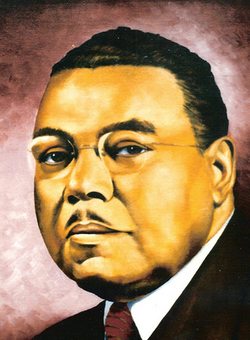
Founder Marcus Peter Blakemore epitomized a blend of profound religious devotion and serene self-assurance, leaving an indelible mark on the realms of education, community service, church affairs, healthcare, and fraternal endeavors. Affectionately dubbed “Blakie,” he entered this world in Franklin, Indiana, on January 3, 1889, assuming the mantle of the eldest among four siblings.
Blakemore’s educational voyage led him from the bustling streets of Franklin to the vibrant community of Anderson, Indiana, where he received his foundational schooling and graduated from high school in 1909. His pursuit of knowledge found its zenith at Indiana University, where he embarked on a transformative journey in the academic year following his high school graduation. Though his tenure at the university was brief, departing in the spring term of 1912, Blakemore’s entrepreneurial spirit ignited as he founded the Electric Engineering Company, a venture that underscored his ingenuity and drive. However, duty called with the outbreak of World War I, leading Blakemore to enlist in the U.S. Army, where he served with distinction as a Private within the 30th Company, 154th Depot Brigade. Following his honorable discharge in August 1918, he embarked on a new chapter, exchanging vows with Azalea Hall the ensuing month, and together they welcomed a daughter, Elizabeth, into their family.

Founder Ezra Dee Alexander, renowned for his affable demeanor and unwavering work ethic, stands as a paragon of dedication and outgoing spirit in the annals of education and medicine. Born on July 18, 1891, in Bloomington, Indiana, he assumed the role of the second eldest among seven siblings, heralding the inception of a remarkable journey marked by academic achievement and professional distinction.
Alexander’s educational trajectory commenced with his graduation from Bloomington High School in 1910, laying the cornerstone for his pursuit of higher learning. Matriculating to Indiana University in the fall of the same year, he immersed himself in a rigorous academic regimen, culminating in his graduation with an A.B. degree in 1917, a testament to his scholarly diligence and intellectual acumen. Prior to his graduation, Alexander’s commitment to education shone brightly as he assumed roles as both a teacher and principal within Indiana’s public school system, solidifying his reputation as a stalwart advocate for academic excellence.
The zenith of Alexander’s educational odyssey found its culmination with the attainment of a coveted M.D. degree from the esteemed Medical School of Indiana University in 1919, a milestone that propelled him into the esteemed realm of medical practice. Serving an internship at Provident Hospital in Chicago in 1920, he honed his skills and expertise, laying the groundwork for a prolific career marked by unwavering dedication to the healing arts. From his valiant service in the Army Medical Corps during World War I to his pivotal role as a medical examiner during World War II, Alexander’s commitment to serving his country and community remained unwavering. For nearly half a century, he practiced medicine in the vibrant city of Indianapolis, leaving an indelible legacy as a compassionate healer and esteemed member of the medical fraternity.

Founder John Milton Lee, distinguished for his scholarly pursuits, unwavering loyalty, and indefatigable dedication to the advancement of the fraternity, stands as a beacon of inspiration within its annals. Revered for his idealistic nature, Lee earned the moniker ‘a dreamer’ during the formative years of the fraternity, symbolizing his visionary spirit and commitment to lofty aspirations. Born on September 7, 1890, in Danville, Indiana, he emerged as the third offspring among four siblings, heralding the inception of a journey marked by intellectual fervor and unwavering devotion to fraternity ideals.
Lee’s educational voyage commenced within the halls of Danville’s public schools, where he laid the foundation for his academic pursuits. In 1910, he embarked on a transformative journey at Indiana University, where his fervent dedication to knowledge propelled him through three years of pre-medical studies, underscoring his commitment to academic excellence. Despite his commendable progress, Lee’s academic path encountered detours, reflective of the challenges that beset his journey. His pursuit of higher learning led him to the University of Pennsylvania in 1914, yet health considerations prompted his withdrawal, marking a temporary hiatus in his academic pursuits. Undeterred by adversity, Lee continued his quest for knowledge at Temple University in 1915, only to be compelled to depart due to the tragic loss of a family member, underscoring the profound impact of personal circumstances on his educational journey.
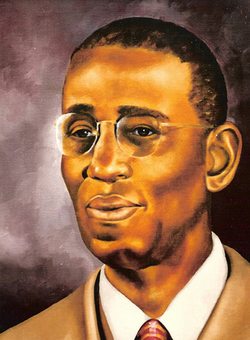
Founder Henry Tourner Asher, an unassuming yet steadfast advocate for the advancement of Negro youth, equal rights, higher education, and religious causes, emerged as a beacon of inspiration within his community. Born on June 30, 1890, in Owensboro, Kentucky, he assumed the mantle of the eldest among seven siblings, inheriting a legacy of service and dedication from his father, a Baptist Minister.
Asher’s educational journey commenced in Bloomington, Indiana, following his family’s relocation, culminating in his graduation from Bloomington High School in 1910. Eager to pursue higher learning, he embarked on a transformative path at Indiana University, where his dedication to academic excellence bore fruit with the conferral of a Bachelor of Arts degree in 1914. His commitment to education and service led him to assume the role of instructor at Lincoln Institute in Jefferson City, Missouri, from 1914 to 1915, underscoring his unwavering dedication to nurturing the minds of future generations. Continuing his pursuit of knowledge, Asher embarked on a graduate program at the University of Wisconsin and later at the University of Illinois. However, it was at the University of Minnesota where he found academic fulfillment, earning a Master of Arts degree in 1917. Undeterred by the challenges that lay ahead, Asher further enriched his academic repertoire, obtaining a degree of LL.B. at the Detroit College of Law in 1928, cementing his commitment to both education and the pursuit of justice.
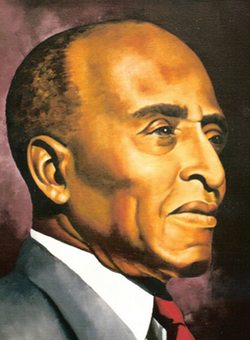
Founder Edward Giles Irvin, a multifaceted figure esteemed for his roles as a civic and religious leader, journalist, and entrepreneur, emerged as a pivotal force in the fabric of his community. Born on August 13, 1893, in Spencer, Indiana, he assumed the position of the seventh offspring among nine siblings, hailing from a lineage deeply rooted in the African Methodist Episcopal ministry.
Irvin’s educational journey commenced with the completion of his studies at Kokomo Indiana High School in 1910, laying the groundwork for his pursuit of higher learning. At the tender age of 17, he embarked on a transformative chapter at Indiana University, where his indomitable spirit and visionary leadership came to the fore. Remarkably, Irvin emerged as the youngest among ten Black students who spearheaded the founding of Kappa Alpha Psi® Fraternity, a testament to his precocious intellect and unwavering commitment to fraternity ideals. Notably, he played a pivotal role in the fraternity’s Incorporation Committee, underscoring his dedication to its organizational development. Despite his early achievements, Irvin’s academic journey at Indiana University concluded following the spring term of 1911, marking the commencement of a trajectory defined by his manifold contributions to society.
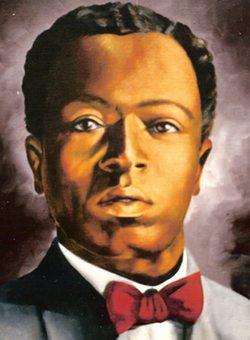
Founder George Wesley Edmonds, characterized by his quick wit and intriguing persona, remains a figure of fascination within the fraternity’s ranks. Born on August 13, 1890, in Knight Township, Vanderburgh County, Indiana, he assumed the mantle of the eldest among two siblings, heralding the dawn of a remarkable journey.
Edmonds embarked on his educational odyssey at Clark High School in nearby Evansville, Indiana, where he laid the groundwork for his future endeavors. In the fall of 1910, he commenced his studies at Indiana University, immersing himself in the pursuit of knowledge and the cultivation of fraternal bonds. His pivotal role in the founding of Kappa Alpha Nu Fraternity alongside nine other students underscores his commitment to fraternity ideals and organizational development. Notably, Edmonds assumed the position of Corresponding Secretary in the articles of incorporation of the Grand Chapter of Kappa Alpha Nu, further cementing his dedication to the fraternity’s administrative affairs. His distinction as one of the three freshmen, alongside Asher and Blakemore, to be initiated into the Alpha of Kappa Alpha Nu serves as a testament to his early leadership and commitment to the fraternity’s principles.
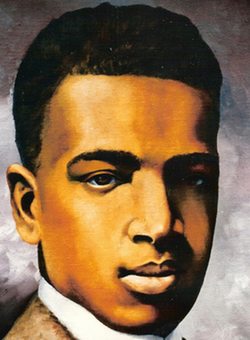
Founder Paul Waymond Caine, celebrated for his entrepreneurial acumen and culinary prowess ahead of his time, epitomized warmth and geniality in all his interactions. Born on May 17, 1890, in Greencastle, Indiana, he was initially believed to be an only child but later discovered to have a half-brother, enriching the tapestry of his familial heritage.
Caine’s educational journey commenced within the corridors of Greencastle public schools, where he laid the foundation for his future endeavors. Sometime between 1909 and 1910, he embarked on a path of academic enrichment at Indiana University, pursuing a major in business administration. His culinary talents flourished during his tenure at DePauw University, where he served as a cook in the sorority houses, honing his skills and garnering acclaim for his culinary creations. Renowned for his prowess as a caterer, Caine became a sought-after figure among the White fraternities on campus, ensuring that his fellow Founding fraternity brothers were spared the pangs of hunger with his delectable offerings. Through his culinary artistry and unwavering commitment to hospitality, Caine left an indelible mark on the fraternity’s early years, embodying the spirit of camaraderie and sustenance.
** Images and information provided by Official Kappa Alpha Psi Website: https://www.kappaalphapsi1911.com/
